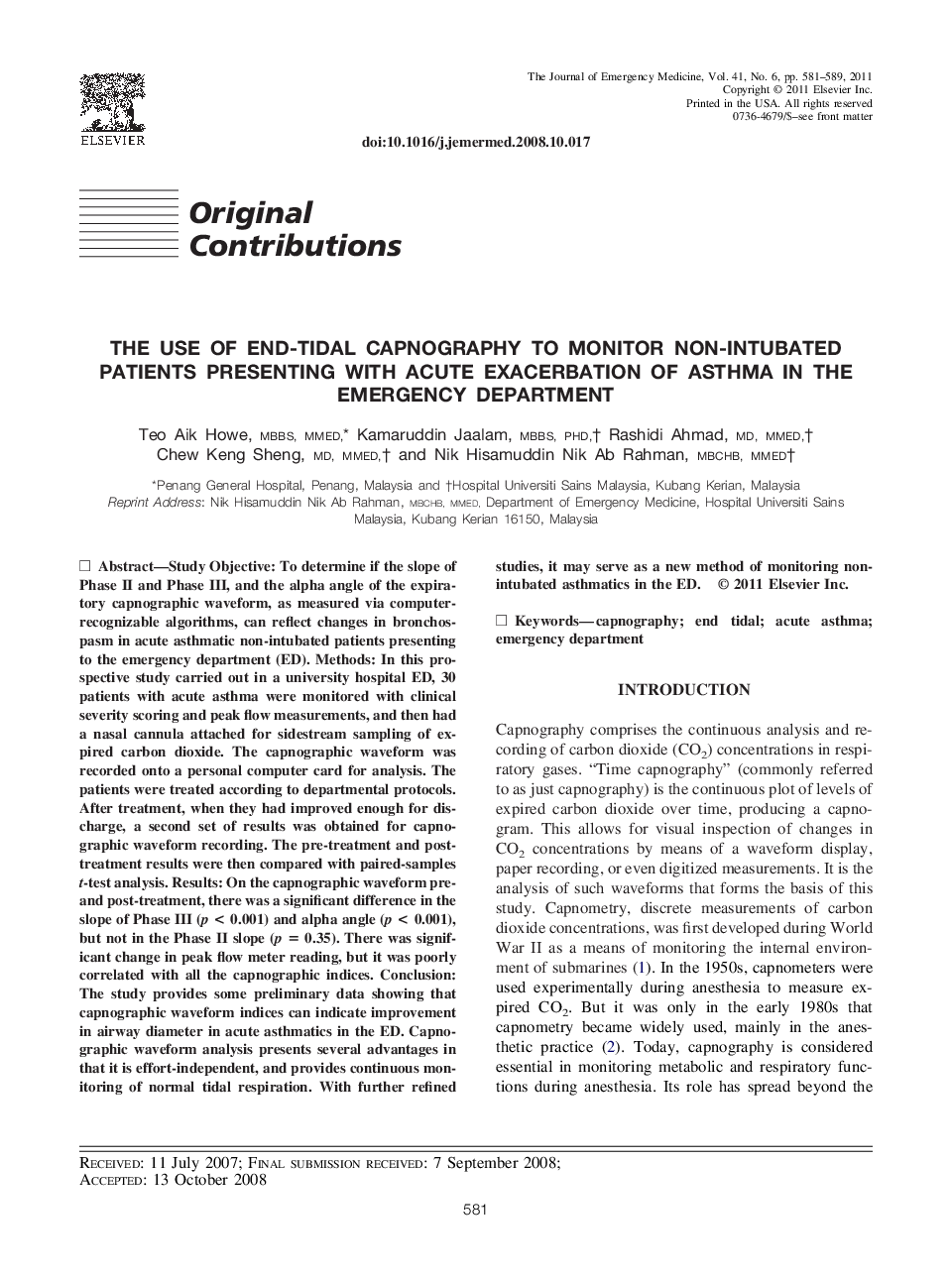| Article ID | Journal | Published Year | Pages | File Type |
|---|---|---|---|---|
| 3250106 | The Journal of Emergency Medicine | 2011 | 9 Pages |
Study ObjectiveTo determine if the slope of Phase II and Phase III, and the alpha angle of the expiratory capnographic waveform, as measured via computer-recognizable algorithms, can reflect changes in bronchospasm in acute asthmatic non-intubated patients presenting to the emergency department (ED).MethodsIn this prospective study carried out in a university hospital ED, 30 patients with acute asthma were monitored with clinical severity scoring and peak flow measurements, and then had a nasal cannula attached for sidestream sampling of expired carbon dioxide. The capnographic waveform was recorded onto a personal computer card for analysis. The patients were treated according to departmental protocols. After treatment, when they had improved enough for discharge, a second set of results was obtained for capnographic waveform recording. The pre-treatment and post-treatment results were then compared with paired-samples t-test analysis.ResultsOn the capnographic waveform pre- and post-treatment, there was a significant difference in the slope of Phase III (p < 0.001) and alpha angle (p < 0.001), but not in the Phase II slope (p = 0.35). There was significant change in peak flow meter reading, but it was poorly correlated with all the capnographic indices.ConclusionThe study provides some preliminary data showing that capnographic waveform indices can indicate improvement in airway diameter in acute asthmatics in the ED. Capnographic waveform analysis presents several advantages in that it is effort-independent, and provides continuous monitoring of normal tidal respiration. With further refined studies, it may serve as a new method of monitoring non-intubated asthmatics in the ED.
